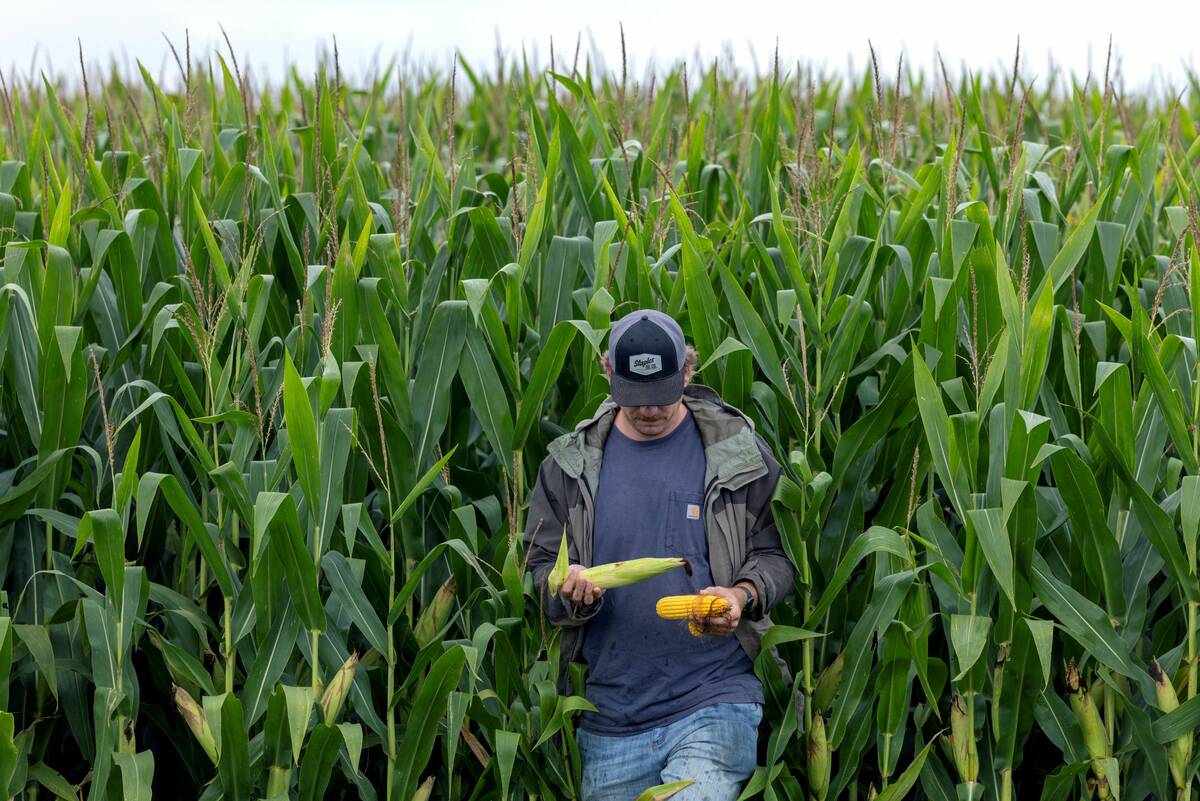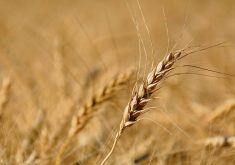Glacier FarmMedia | MarketsFarm – The harvesting of fall cereals was well underway in Manitoba, according to the province’s latest crop report released on Aug. 13. Manitoba Agriculture said 39 per cent of the fall rye and 17 per cent of the winter wheat had been combined.
Yields for the fall rye were reported to be 90 to 120 bushels per acre and 40 to 110 bu./ac. for the winter wheat.
In addition, five per cent of the barley and almost one per cent of the spring wheat and field peas were taken off the fields. The ag department said most of the spring cereals ranged from hard dough to physiological maturity, with late-planted crops at the soft dough stage.
Read Also

The U.S. corn crop could be the biggest ever. That’s terrible news for America’s farmers.
The USDA predicts a record corn crop for U.S. farmers, who question the agency’s accuracy amidst high debt and low crop prices.
As for the quality of the spring wheat, Manitoba Agriculture said the Interlake and the central region reported it to be 85 per cent good to excellent. The northwest came in at 80 per cent good to excellent, with the eastern region at 70 per cent and the southwest at 65 per cent.
Manitoba’s canola was said to be in the pod fill to early ripening stage, while some of the oilseed has been swathed. The later-planted canola was nearing the end of blooming to beginning to fill pods. Among the other oilseeds, the flax was reported to be in growth stages 10 to 11, while the sunflowers ranged from the R4 stage to completing flowering.
The report said soybeans were in the R3 to R5 stages with the majority in R4.
The first cut of tame forages was said to be complete and work on native stands was continuing. The second cut of alfalfa was finished as well with good yields reported. High levels of humidity and morning dew has impeded the on the quality of the forages. Despite that, cereal silage yields were above average.
Hot, dry conditions were slowing pastures due to limited moisture reserves. Dugouts were at 80 per cent capacity and water supplies on pastures was adequate.
Rainfall in the province saw Moosehorn and Rorketon receive the most at 42 to 45 millimeters, while several locations had none.











